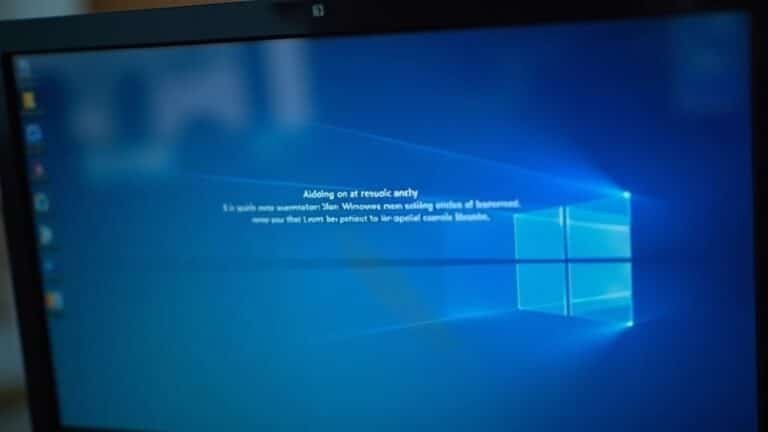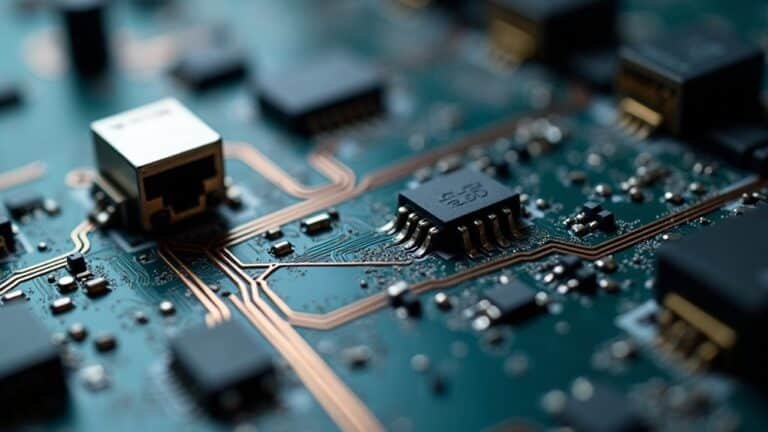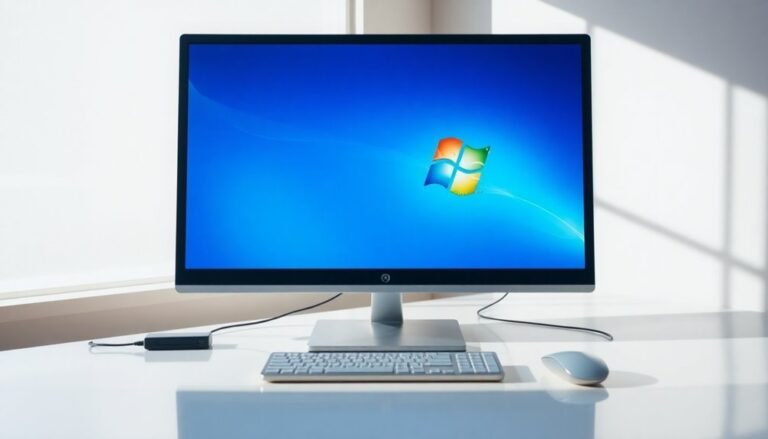Windows 7 Slow Startup: Speed Up Windows 7 Boot Time
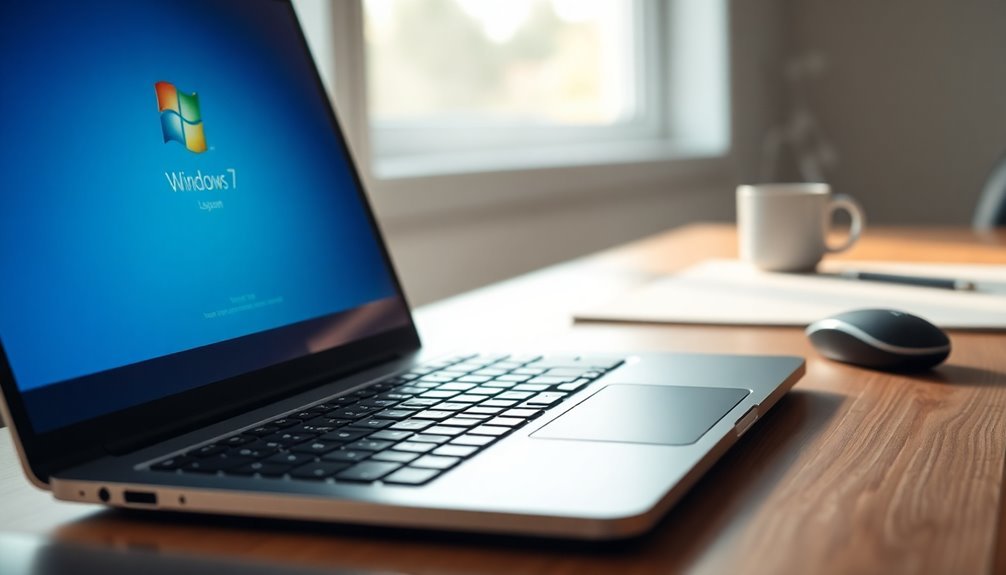
If your Windows 7 PC boots slowly, start by disabling unnecessary startup programs. Regularly use Disk Cleanup and defragmentation tools to maintain system performance.
Confirm your C: drive has enough free space and update drivers. Unplug any unused devices to reduce boot time.
Check for hard drive health issues and run built-in troubleshooters like Startup Repair to fix errors. For persistent problems, a fresh Windows install may be needed.
You’ll find practical steps to speed up boot time as you explore further solutions here.
Common Causes of Slow Boot Times in Windows 7
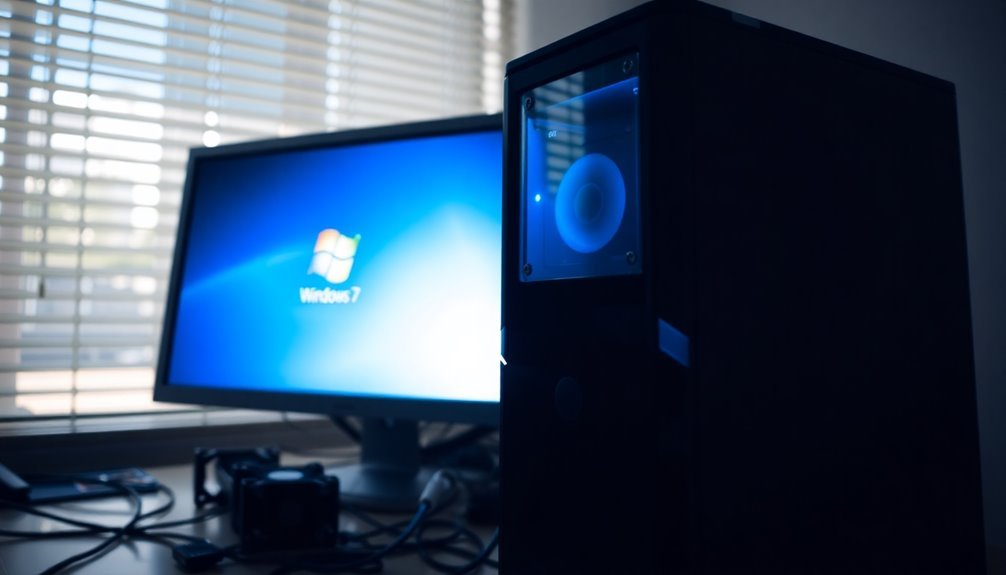
Common Causes of Slow Boot Times in Windows 7 and How to Fix Them
If your Windows 7 PC is experiencing slow boot times, several common technical issues could be responsible. One major factor is fragmented files on traditional hard drives, which scatter data and make Windows take longer to locate and load essential startup files.
Additionally, a full system partition (C:) can restrict space needed for swap files and temporary operations crucial during boot-up, further slowing the process.
For users with SSDs, misaligned partitions can cause drives to perform extra operations, reducing efficiency and leading to unexpected slowdowns during startup.
Outdated or incorrect BIOS settings and hardware drivers also contribute to delayed device initialization, especially after system upgrades or rebuilds. Background processes consuming system resources can also significantly impact boot times, as unnecessary programs and services running in the background delay system startup.
Another common cause is excessive system restore points. When these exceed ReadyBoot’s size limit, Windows 7 can’t precache startup data, resulting in longer boot times. This issue can often be identified in Event Viewer under ReadyBoost (Event ID 1016).
To improve Windows 7 boot speed, regularly defragment your hard drive, free up space on the system partition, ensure SSD partitions are correctly aligned, update BIOS and drivers, and manage system restore points effectively.
Addressing these technical factors is key to optimizing your Windows 7 startup performance and reducing wait times.
Managing and Disabling Startup Programs
How to Manage and Disable Startup Programs to Boost Boot Speed
To enhance your PC’s startup performance, prioritize disabling nonessential applications, especially those you rarely use. Regularly auditing your startup programs keeps your system lean and efficient. Managing startup programs improves computer performance and convenience, making it a crucial habit for maintaining system health.
Follow these effective steps to manage startup items:
- Uncheck unwanted programs in msconfig’s Startup tab to prevent them from launching at boot.
- Remove obsolete startup entries in the Windows Registry, but only if you’re confident to avoid system issues.
- Use Microsoft’s Autoruns tool to identify and disable hidden startup processes that slow down boot time.
By managing and disabling unnecessary startup programs, you can significantly improve your computer’s boot speed and overall performance.
Regular startup program maintenance is essential for a faster, smoother Windows experience.
Performing Effective Disk Maintenance
Effective Disk Maintenance Tips to Speed Up Windows 7 Startup
Disk maintenance is essential for fixing slow startup problems on Windows 7 computers. Start by using the built-in Disk Cleanup tool to delete unnecessary files and clear temporary data. Be sure to click “Clean up system files” for a more thorough cleanup.
Additionally, manually clear the contents of the %TEMP% folder, as leftover temporary files can accumulate and significantly slow down your boot time. Removing old system restore points that are no longer needed can also free up valuable disk space and improve system responsiveness.
For systems with mechanical hard drives, regularly defragment your disk using Windows 7’s defragmentation utility. Disk defragmentation helps consolidate fragmented data, which reduces read times during startup. Schedule automatic defragmentation during idle periods to keep your system optimized without interrupting your work.
Remember, don’t defragment solid-state drives (SSDs), as this process can degrade their lifespan and offers no performance benefits.
To maintain optimal disk performance, keep your C: drive usage under 75% capacity to avoid disk thrashing. Consider moving large files or applications to secondary storage devices and monitor your disk space routinely.
Additionally, ensure your computer’s hardware remains clean and dust-free to prevent overheating, which can negatively impact disk performance.
Utilizing Built-in Windows Troubleshooting Tools
Troubleshooting Slow Startup on Windows 7 with Built-in Tools
Experiencing slow startup or boot problems on Windows 7? Fortunately, Windows 7 includes powerful built-in troubleshooting tools designed to diagnose and fix slow or problematic boot issues quickly and safely.
Access these tools through the System Recovery Options menu by pressing F8 during startup or using a Windows 7 repair disc.
Key Windows 7 startup troubleshooting tools include:
- Startup Repair: Automatically scans and repairs boot errors such as corrupted system files or incorrect configurations. It’s the most effective first step to resolve slow startup issues and prevent boot failures.
- System Restore: Restores your system to a previous point in time, undoing recent updates or software installations that may be causing slow or failed startups without affecting your personal files.
- Windows Memory Diagnostic: Tests your computer’s RAM for errors that can lead to slow startups, crashes, or system instability, helping you identify hardware-related problems.
By leveraging these Windows 7 built-in troubleshooting tools, you can improve your PC’s startup speed and stability efficiently.
For optimal results, regularly use these utilities when experiencing slow boot times or startup errors on Windows 7.
Addressing Hardware Issues That Affect Startup Speed
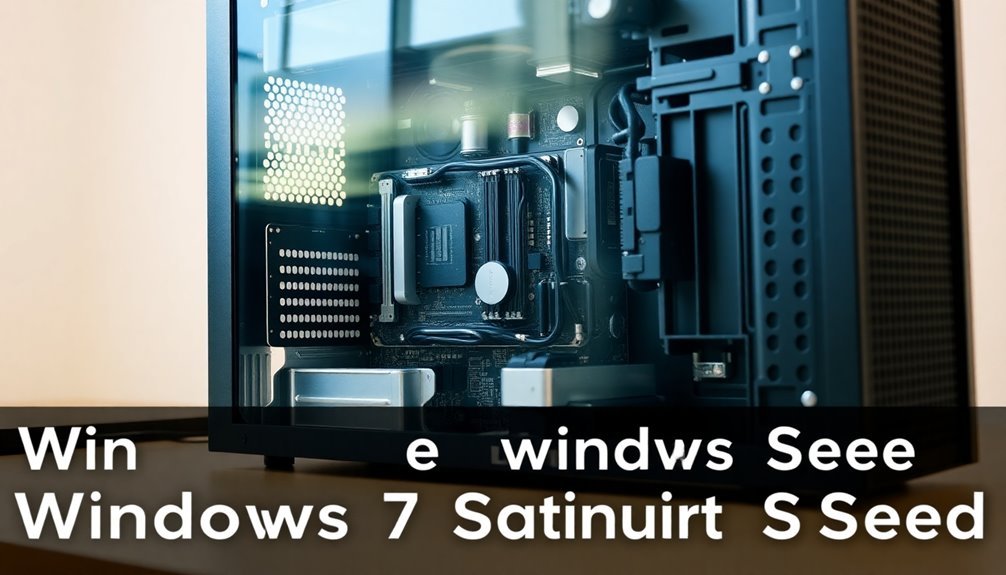
Boost Your Windows 7 Startup Speed by Fixing Hardware Issues
Hardware reliability is crucial for improving your Windows 7 startup speed. Start by inspecting your PC’s interior for dust buildup in fans and vents, which restricts airflow and causes overheating—leading to slow boot times. Regular cleaning helps maintain optimal cooling and faster startups.
Next, test your hard drive using built-in tools like “chkdsk” or advanced software such as Hard Disk Sentinel to detect bad sectors or mechanical wear that can delay boot processes. For SSD users, ensure partitions are properly aligned using professional alignment tools to maximize speed and performance.
Check your RAM health with MemTest86; faulty or insufficient memory often results in longer boot times and system crashes.
Additionally, unplug all unnecessary external devices before starting your PC. Faulty peripherals may interfere with the boot sequence, so reconnect them one by one to identify any issues.
Keep your storage controller drivers updated to prevent hardware communication delays.
Also, if your hard drive is fragmented or running low on space, perform disk defragmentation and cleanup to optimize file access and reduce startup delays.
Advanced Tips for Optimizing Boot Configuration
Advanced Tips to Optimize Windows 7 Boot Configuration for Faster Startup
Many users focus on hardware upgrades and software cleanup, but optimizing your Windows 7 boot configuration can unlock significant performance improvements. By fine-tuning boot-related registry settings and managing system services, you can drastically reduce startup time.
Start by carefully editing the Windows registry: disable unnecessary prefetching and boot logging by setting the `EnableBootTrace`, `EnablePrefetcher`, and `EnableSuperfetch` values to 0 located at `HKLMSYSTEMCurrentControlSetControlSession ManagerMemory ManagementPrefetchParameters`.
Always back up your registry before making any changes to avoid system issues.
Next, optimize your startup services. Use the `services.msc` console to review running services and disable non-essential ones to free up RAM and minimize disk activity.
Trusted guides like Black Viper’s Windows 7 service configurations can help you determine which services to safely disable.
For advanced users, leverage the powerful Windows Performance Toolkit. Run the command `xbootmgr -trace boot -prepSystem -verboseReadyBoot` to analyze your boot process in-depth and optimize boot file layout for faster startup times.
Key steps to optimize Windows 7 boot configuration:
- Disable unnecessary prefetching and boot logging via registry tweaks.
- Streamline system services to reduce resource usage during startup.
- Use Windows Performance Toolkit’s xbootmgr tool for detailed boot optimization.
Implementing these advanced Windows 7 boot optimization tips can deliver noticeable improvements in your PC’s startup speed and overall performance.
When to Consider a Fresh Installation
When to Consider a Fresh Installation of Windows 7 for Better Performance
If you’ve tried all boot optimization methods and Windows 7 still boots slowly or shows persistent errors, it’s time to consider a fresh installation of Windows 7. Over time, system files can become corrupted or fragmented, registry bloat accumulates, and unnecessary startup programs can significantly slow down your boot process.
Persistent Blue Screens of Death (BSODs), unresolved system errors, or repeated Windows Update failures are clear signs that a fresh Windows 7 install is needed to fix deeper system issues. Additionally, if malware infections, severe registry corruption, or failed repair attempts continue, performing a clean install is the best way to restore your PC’s health.
A fresh Windows 7 installation resets your system to a like-new condition, removing old errors, leftover software, and clutter that degrade performance. Expect faster boot times, improved system stability, and enhanced hardware compatibility after reinstalling Windows 7.
Before you start, make sure to back up all important data, have your Windows 7 installation media and product key ready, and allocate time to reinstall your programs. This clean installation method provides a more secure, stable, and responsive Windows 7 experience.
Keywords: fresh installation Windows 7, clean install Windows 7, Windows 7 slow boot fix, Windows 7 persistent errors, Windows 7 BSOD fix, Windows 7 reinstall guide, Windows 7 system restore, Windows 7 malware removal, Windows 7 performance improvement
Frequently Asked Questions
Can Windows 7 Slow Startup Indicate a Failing Power Supply?
Yes, a slow startup in Windows 7 can indicate a failing power supply, especially if you notice random shutdowns, hardware instability, or long boot times. Check PSU health, voltages, and rule out software or disk issues first.
Will Dual-Booting With Another OS Slow Windows 7 Startup?
Dual-booting with another OS usually doesn’t slow Windows 7 startup. You’ll only notice a brief bootloader menu. If disk space is low or partitions are fragmented, you might see delays—keep your drives clean and defragmented.
Does Changing User Account Types Affect Boot Speed?
Switching user account types doesn’t directly diminish or delay boot speed. Startup sluggishness stems from system services, startup software, or sluggish drivers. So, streamline startup items and solve software snags instead of switching user settings for speed.
Do Large Fonts or High-Resolution Settings Impact Startup Time?
Large fonts or high-resolution settings don’t impact startup time. You might see UI inconsistencies or scaling issues after boot, but system startup remains unaffected. Focus on troubleshooting other factors if you’re experiencing delays while starting your computer.
Can Windows 7 Boot Faster on Virtual Machines Than Physical PCS?
You usually won’t see Windows 7 boot faster on virtual machines than on physical PCs. Physical hardware provides direct access and optimized drivers, while VMs add virtualization overhead and resource sharing, generally resulting in slower startup compared to native boots.
Conclusion
Think of your Windows 7 PC like an old steam locomotive—if you clear the tracks (startup programs), oil the gears (disk maintenance), and troubleshoot the engine (hardware and system tools), you’ll get it running full speed again. By following these steps, you can dramatically reduce boot times and keep your system efficient. If issues persist, don’t hesitate to contemplate a fresh start with a clean install. Stay proactive, and your PC won’t leave you waiting at the station.
